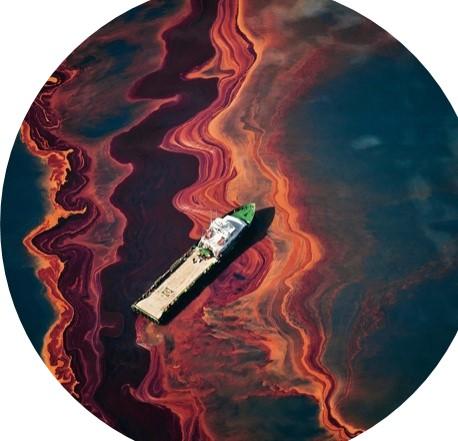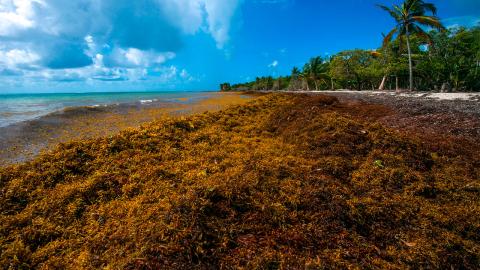GLIMR will provide federal, state, and local agencies with vital information on coastal hazards (such as oil spills, harmful algal blooms, post-storm assessment, and water quality) for improved response, containment, and public advisories both at sea and along the coast.
GLIMR will improve quantification of primary productivity, biomass, and carbon fluxes within coastal aquatic ecosystems and across the land-sea interface and contribute observations that will aid development and evaluation of models that project future changes in carbon cycling and marine ecosystems for use in ecological forecasting and as inputs for improved climate change predictions.
The science applications objectives aim to study the formation, magnitude, and trajectories of harmful algal blooms (HABs), oil spills, and Sargassum accumulation events.

HABs
Red algal blooms produced by the dinoflagellate Karenia Brevis in the Gulf Coast.
Image: Kai Schumann

Oil Spills
A ship drifts amidst a heavy band of oil spilled in the Gulf of Mexico from the Deepwater Horizon wellhead, May, 2010
Image: Daniel Beltrá

Sargassum Accumulations
Deep drifts of Sargassum swept ashore on Guadeloupe in April 2011
Image: Helene Valenzuela/AFP/Getty